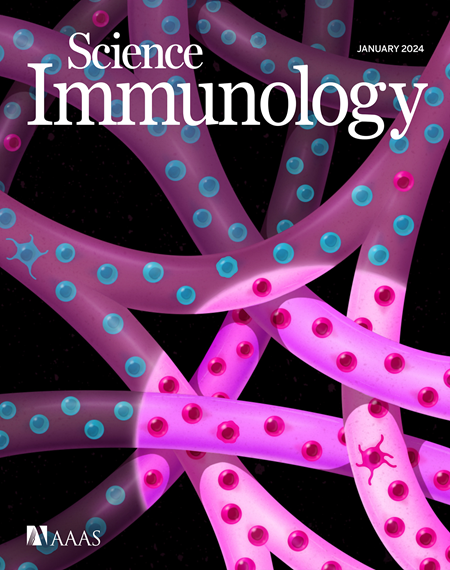脑肿瘤的免疫学
IF 16.3
1区 医学
Q1 IMMUNOLOGY
引用次数: 0
摘要
脑肿瘤是癌症免疫疗法的一个独特挑战,因为它们位于免疫特权部位。然而,脑肿瘤免疫微环境更多是由肿瘤类型而不是大脑本身的位置决定的。与原发性脑肿瘤相比,转移性脑肿瘤具有更高的免疫原性和对免疫治疗的反应,反映了这一特征。脑肿瘤的免疫疗法旨在通过疫苗、免疫检查点抑制剂或过继性T细胞疗法诱导和增强肿瘤T细胞反应。该领域的一个基本挑战是,尽管存在不利的免疫抑制微环境,这些靶向脑肿瘤的T细胞如何进入脑肿瘤并维持其功能。在这里,我们回顾了目前对脑肿瘤抗原性的细胞和分子决定因素以及免疫抑制脑肿瘤微环境的了解。扩大和利用这一知识将为有效的联合治疗提供关键。本文章由计算机程序翻译,如有差异,请以英文原文为准。

The immunology of brain tumors
Brain tumors represent a unique challenge for cancer immunotherapies because of their location in an immune privileged site. However, the brain tumor immune microenvironment is dictated more by tumor type than the location within the brain per se. This feature is reflected by the higher immunogenicity and response to immunotherapies of metastatic brain tumors compared with primary brain tumors. Immunotherapies for brain tumors aim at inducing and boosting tumor T cell responses using vaccines, immune checkpoint inhibitors, or adoptive T cell therapies. A fundamental challenge in the field is how such brain tumor–targeting T cells gain access to brain tumors and maintain their function despite a hostile immunosuppressive microenvironment. Here, we review current knowledge of the cellular and molecular determinants of the antigenicity of brain tumors and the immunosuppressive brain tumor microenvironment. Expanding and exploiting this knowledge will provide the key for effective combinatorial therapies.
求助全文
通过发布文献求助,成功后即可免费获取论文全文。
去求助
来源期刊

Science Immunology
Immunology and Microbiology-Immunology
CiteScore
32.90
自引率
2.00%
发文量
183
期刊介绍:
Science Immunology is a peer-reviewed journal that publishes original research articles in the field of immunology. The journal encourages the submission of research findings from all areas of immunology, including studies on innate and adaptive immunity, immune cell development and differentiation, immunogenomics, systems immunology, structural immunology, antigen presentation, immunometabolism, and mucosal immunology. Additionally, the journal covers research on immune contributions to health and disease, such as host defense, inflammation, cancer immunology, autoimmunity, allergy, transplantation, and immunodeficiency. Science Immunology maintains the same high-quality standard as other journals in the Science family and aims to facilitate understanding of the immune system by showcasing innovative advances in immunology research from all organisms and model systems, including humans.
 求助内容:
求助内容: 应助结果提醒方式:
应助结果提醒方式:


